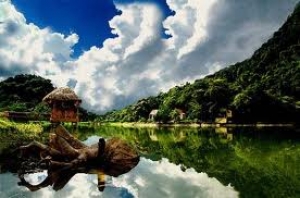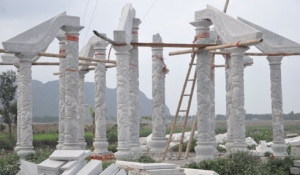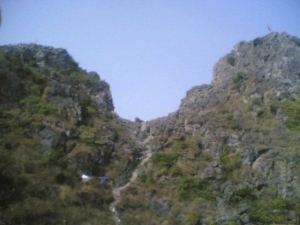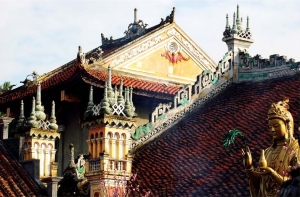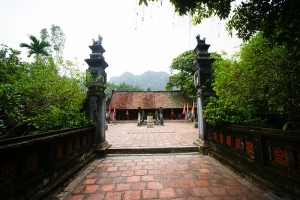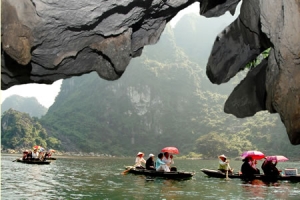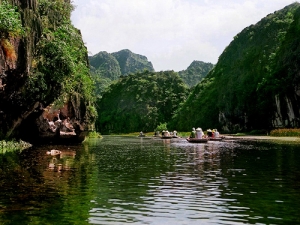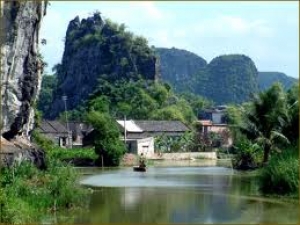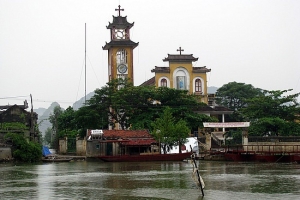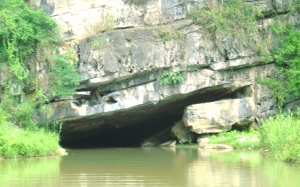
Asia Pacific Travel Team
The largest and first Vietnam’s national park, Cuc Phuong National Park
The national park was officially opened in July 1962 as the first national park in Vietnam, becoming one of the most impressive tourist destinations in Vietnam now. If tourists in Vietnam travel want to visit the national park, the dry season, from December to April is considered the best time when the hard forest rain accounting for 90% of the annual rainfall is over. The park is conveniently located on the route to several tourist attractions, including Bich Dong Pagoda, Hoa Lu, and Sam Son Beach.
Ninh Binh people boast Cuc Phuong National Park of being one of the most important biodiverse sites in Vietnam. There are plenty of plants and mammals living in the park. There are an estimated 2,000 different species of flora and the 450 species fauna account for 38% of the national fauna. The vegetation cover is classified into three types. The flora is quite a treasure with a wide variety of 1,944 species, 908 genuses and 229 families. Especially it is enjoyable to touch the thousand-year-old cho xanh (parashrea stellata) and sau (Dracontomelum Duperranum or Dancorra Edulis) trees, 50-70m high. This natural reserve is covered with 2,000 species of plants. Especially orchid flowers are abundant with 50 species, some of which blossom and have aroma all year around. The fauna is diversified represented by 71 animal species, 319 bird species, 33 reptile species, and 16 amphibian species. Rare species include the bear, horse, wild boar, tiger, leopard, fox, squirrel, monkey, etc. A large area, for half-natural breeding, is reserved for raising wild animals such as the spotted deer, deer, golden monkey, langur (vooc quan dui), flying squirrel, draco (than lan bay) and for research. Hundreds of beautiful and strange birds and butterflies are also living here.

Cuc Phuong National Park has a multitude of grottoes, including Thang Khuyet, Con Moong, Pho Ma, and Nguoi Xua, etc, thanks to the limestone terrain. Besides visiting the Park, visitors joining tours in Vietnam also pay a visit to the caves, waterfalls and streams in the forest or stop over at a Muong ethnic's village.
Because of its position between three provinces, combining a trip to Cuc Phuong with a trip to Hoa Binh or Ninh Binh province is very easy to tourists in Vietnam tourism. Also you can depart from Hanoi, spend the whole day exploring the forest and overnight at the Park's guest house.
Ninh Binh beautifies Vietnam not only with potential tourist attractions but also with stone carving
In the past, stone carving was only practised in a few households in Ninh Van commune, Hoa Lu district in the northern province of Ninh Binh, and they mainly produced items made of blue stone which were sold only in the region.
Gradually over time many people there have benefited from this industry and the noise of craftsmen’s hammers and machinery can now be heard all around the commune.
Most of people and households produce stone carvings ranging from simple to sophisticated designs, most of which have become popular in many areas of the country.


Water hyacinth made of stone

Machinery supports for stone industry

Making a Buddha statue

Rice farmers are now part of the stone carving industry

Skilfull hands of craftsmen
o
Large works require the use of machines
Mountain Elephant likes huge elephant lying between paddy field and blue sky
Through Kien An district, travelers will see Mountain Elephant which is the site of a widely diverse natural landscape. The Mountain looks like a huge elephant lying between paddy field and blue sky, with an area of more 1km2, 145m high reflected in Lach Tray river.
In Mountain Elephant, there are many “fairy caves”, such as Hong Voi, Chieng, Ca Chep, and Be. To the south of the Mountain is the Nam Tao Cave, and to the north is the Bac Dau Cave. According to Chinese myth, Nam Tao and Bac Dau are the two gods who care for life and death. , there are lot of stalactites of various shapes in the cave, looking like kneeling dragons, tigers, and the head of an elephant.
On top of the mountain, there is an flat area, which is called the “Fairy Chess Board”. There are also ruins of pagodas and citadels from the 16th century Mac Dynasty on the mountain. Speciality is the remains of the ancient Viet civilization, including stone axes and chisels, etc, which date back to over 3,000 years.
Du Hang Pagoda - ancient pagoda and on the big scale in Hai Phong
Lying on Ho Nam Ward- Le Chan District, 2km southwest of City center, Du Hang Pagoda's nom de plume is Phuc Lam Tu, which used to be ancient pagoda and on the big scale in Hai Phong.
Pagoda has the ancient style and originated since Tien Le dynasty (980-1009). In Le Gia Tong dynasty (1672), high-ranking bonze Nguyen Đinh Sach donated his own properties to buy land to enlarger this pagoda with full lance, ring, temple of forefathers, bonze's house with the tiled roof, and the paths were paved over with Bat Trang bricks...Up to now, the pagoda has been restored by the believers and Buddhist clergymen to make it more and more beautiful.
Du Hang Pagoda currently has magnificent architecture with seven -room Buddha's the full precinct, the3 floor- ring gate with curved roof. Right in the middle of the ring gate is hanging big bronze ring, with a written line "Phuc Lam Tu Chung", or that means the ring of Phuc Lam Pagoda.
Visiting the site of Du Hang pagoda, visitors will have a chance to contemplate many valuable Buddha statues, horizontal lacquered board, parallel sentences bearing the art style of the Nguyen dynasty at the end of 19th to the early 20th century and many ancient graphic fine arts are still preserved in the Buddhist temple of Pagoda
Tower garden of pagoda is quiet under the shady ancient and big trees with tower grave groups of all the progenitor bronzes who died in this Pagoda and those of progenitor contemplation school of Truc Lam Yen Tuand also those of Chan Huyen high -ranking bonzes and many bonzes who had presided Du Hang Pagoda
All the Buddha's altar rooms have architectural shape of Indian or Cambodian Pagodas; the top roofs have 43 pointed curved heads which illustrate for the Holey water bottles bringing the auspicious things to everyone. For long, Du Hang Pagoda has been drawing many tourists attention both at home and abroad
If tourists in Vietnam Travel have chance to visit Hai Phong city, Du Hang Pagoda is a must-see place that should not be missed!
Dinh and Le Temples- The places for worshiping Kings of Dinh and Le Dynasties
In 968, Dinh Bo Linh ascended to the throne and took the name of King Dinh Tien Hoang and reunified the country under the name of Dai Co Viet and Hoa Lu was its capital for 41 years (968-1009).
The mountains and sea combined to make Hoa Lu ancient capital’s picturesque landscape. Hoa Lu lays in a flat valley surrounded by the Trang An lime stone mountains, which form a natural wall protecting the old citadel. The city’s northwest is bordered by the Hoang Long River, the tributaries of which run through the capital, cooling the weather within the city and serving as convenient waterways.
The Royal Court was built in an area of 150 hectares in the eastern part of the capital while the western part served as a site to educate and protect children.
As the capital of the country for 41 years, Hoa Lu has many palaces, pagodas, tombs and pavilions that were built by different dynasties. One of the most popular pieces of architecture is the Bao Thien Tue Palace, which was plated with gold and silver. However many vestiges have been destroyed due to time and weather.
When King Ly Thai To moved the capital from Hoa Lu to Thang Long (now Hanoi) in 1010, two temples were built to dedicate to King Dinh Tien Hoang and his successor Le Dai Hanh. These two temples were first built in the 11th century and reconstructed in 1696.
Coming to Hoa Lu, tourists in Vietnam travel can attend traditional cultural festivals here, and the most important and largest of them is the Truong Yen Festival, which is held on the 10th day of the third lunar month. The festival is in memory of the Kings of the Dinh and Le dynasties. The festival lasts for three days with many traditional games and martial arts, reflecting local residents’ legends.

King Dinh Temple- Hoa Lu- Ninh Binh- Vietnam
Dinh Temple worships King Dinh Tien Hoang and Le Temple worships King Le Dai Hanh. These temples were built in 17th century.
Dinh Temple was built in the shape of a Chinese character. Through the first entrance called Ngo Mon, there is a stone royal bed with Nghe (imaginary animals of the old times) standing on both sides. Inside the temple is Khai Thanh in worship of Emperor Dinh's parents.
The temple consists of three parts: Bai Duong for the community, Thien Huong in honour of mandarins, and Chinh Cung where Dinh Tien Hoang’s statue is located. On his left is the statue of his eldest son Dinh Lien, and on his right are those of Dinh Hang Lang and Dinh Toan. On each side of the altar, there is one stone dragon similar to the ones placed near the royal bed.
King Le Temple- Hoa Lu- Ninh Binh- Vietnam
Le Temple is almost the same as Dinh Temple in term of architectural design, except for some details. Le Temple also consists of three parts: Bai Duong used for the community, Thien Huong, in memory of the royal mandarins of King Le, and finally, the altar in memory of the King. The Le Hoan Statue is at the centre, on the left is the statue of Queen Duong Van Nga and on his right is that of Le Ngoa Trieu, his fifth son and the third King of the Pre Le Dynasty.
If you make tours to Vietnam, and Ninh Binh is also added to your itinerary, you should not ignore these temples.
Discovering Mysterious Caves at Trang An Eco-tourism Complex
In Vietnam tourism, visitors coming to Ninh Binh province can make a tour around Trang An in order to visit nine grottoes and three temples, Trinh, Tran and Phu Khong. About a kilometer from the wharf, tourists joining tours in Vietnam will get to the complex’s longest cave called Dark Cave with the length of 315m, and then to Bright Cave which has four gates opening to mountains walls.
These caves are home to many wild creatures and plants and each cave has its own beauty with many stalactites in a profusion of color. Trang An is truly a land of myth and fantasy making it easy to forget the troubles of daily life. Rowing through Trang An Grotto in the quiet, fresh air of the highlands, with only the sound of the birds and the oars stirring the clear water and surrounded by magnificent forested mountains upon which graze white goats, visitors enjoy a heaven on earth.
Tourists in Vietnam travel not only sit on a boat and cruise through the caves but also climb mountains to visit temples associated with historical relics from the dynasties of Dinh, Le, Ly and Tran from the eleventh to fifteenth centuries.
Tourists can contemplate bronze statues, bells and 500 stone arhat statues at Bai Dinh Pagoda.
As other sites in flooded areas, the entrance and the exit for an excursion to Trang An is a wharf. However, after finishing the tour, tourists will not come back to the entrance wharf but will move on to another wharf to have food in a restaurant.

When drifting on the rivers, discovering the mysteries of the caves and breathing the incense smoke from the temples, tourists’ soul will feel peaceful and comfortable.
Visit Van Long Nature Reserve in Vietnam Tourism
When standing on the dyke, visitors in Vietnam travel can see a vast area of mountains and a reservoir full of clear water. The high mountains constitute natural walls surrounding the reservoir. From Long Van wharf where hundreds of boats anchor close to one another, visitors can take a ride on a boat to discover the beauty of Van Long Nature Reserve.
On the vast water surface the space is so quiet that they can hear the sounds of whisking fish, moving oars and children’s voices from distant villages. In the rainy season, the water flows look like silk bands stretching between rows of clumped grass. The water surface is dotted with wild flowers of different colours, giving the reservoir a distinctive beauty. During the cruise, visitors not only contemplate ranges of splendid rocky mountains and surrounding beautiful landscape of the peaceful rural areas and enjoy the tranquil atmosphere, but also have an opportunity to observe aquatic creatures and precious species of birds, learn about various indigenous animals and visit beautiful caves and grottoes.
With the total area of 3,000ha covering seven communes of Gia Vien District, Ninh Binh Province, Van Long Nature Reserve has a rich and diverse flora and fauna, including 457 species of high-class flora, of which eight species have been listed in Vietnam’s Red Book, 39 species of animals including 12 precious and rare species, such as the white-breeched langur, white-collared bear and serow, particularly the belostoma, a precious species of insect that survives in small numbers throughout the world.

Van Long Nature Reserve is also known for many beautiful caves and grottos, such as the Ca Grotto and Rua, Chanh and BongCaves. Besides, there are hundreds of mountains, such as the Meo Cao, Nghien, Voi Dung, Mo Coi, Hom Sach, Da Ban and Co Tien. Visitors are very interested in learning about a legend of the Ca (Fish) Cave. The story is that a black fish was caught at the foot of HoangQuyenMountain. It was so big that even several people could not carry it, hence the name Ca Grotto. Now Ca Grotto, 250m long and half submerged, is the habitat of many species of fish, such as the catfish, anabas and black fish. It runs through the mountain and has magnificent stalactites and stalagmites which have been created over hundreds of millions of years. Van Long Nature Reserve is more attractive with images of rural girls rowing simple bamboo boats with poles, and ox carts carrying visitors on a tour around the village to learn about the daily activities of the rural people and buy the local products.

With no doubt, Van Long wetland will become a tourist- attractive destination for both local and international travelers joining tours in Vietnam in the near future
Hoa Lu Ancient Capital to Restore Cultural and Historical Sites of Vietnam’s Great Value
Located near the town of Ninh Binh, Hoa Lu is the site of a 10th-century capital of an ancient Vietnamese Kingdom called Dai Co Viet. This small Kingdom covered an area of only 300 hectares, and reigned from the 10th century, during the Dinh and Le dynasties, to the 11th century, during the Ly Dynasty. The Kingdom was enclosed by a citadel. The citadel and the Yen Ngua limestone hills provided good defence for this kingdom against the Chinese.
The mountains and sea combined to make Hoa Lu’s picturesque landscape. Hoa Lu lays in a flat valley surrounded by the Trang An lime stone mountains, which form a natural wall protecting the old citadel. The city’s northwest is bordered by the Hoang Long River, the tributaries of which run through the capital, cooling the weather within the city and serving as convenient waterways.
Not much of this ancient kingdom is left standing. Whatever that remains of the palaces and shrines would only be of interest to archaeologists. The Royal Court was built in an area of 150 hectares in the eastern part of the capital while the western part served as a site to educate and protect children. The surrounding to be quite picturesque, with its ponds and limestone range forming a jagged horizon. There are two 17th century temples, modelled after their 11th-century originals that are on most itineraries to Hoa Lu. They are the Dinh Tien Hoang Temple and Le Hoan Temple, dedicated to the founder of the Dinh Dynasty and to its successor, reachable after a climb of more then 200 steps. I shall describe these two temples separately on their respective pages.
As the capital of the country for 41 years, Tourists in Vietnam travel coming to Hoa Lu will get the chance to see many palaces, pagodas, tombs and pavilions that were built by different dynasties. One of the most popular pieces of architecture is the Bao Thien Tue Palace, which was plated with gold and silver. However many vestiges have been destroyed due to time and weather.
In 968, Dinh Bo Linh ascended to the throne and took the name of King Dinh Tien Hoang and reunified the country under the name of Dai Co Viet. Hoa Lu was its capital for 41 years (968-1009). The first 12 years were the Dinh Dynasty while the rest were the Le Dynasty with King Le Dai Hanh. In 1010, King Ly Thai To moved the capital to Thang Long (Hanoi now).
Visiting Hoa Lu ancient capital, travelers in Vietnam tourism can attend traditional cultural festivals here, and the most important and largest of them is the Truong Yen Festival, which is held on the 10th day of the third lunar month. The festival is in memory of the Kings of the Dinh and Le dynasties. The festival lasts for three days with many traditional games and martial arts, reflecting local residents’ legends.
Hoa Lu Ancient Capital Festival
The festival is held annually on the 10th -13th of March of the lunar calendar in Truong Yen commune, Hoa Lu district with the purpose of commemorating the two kings Dinh Tien Hoang and Le Dai Hanh.
The festival includes two parts: Worshiping is water procession at Truong Yen water station located on Hoang Long river and worship at the two temples of King Dinh and King Le. Entertainment activities include performing "Co lau tap tran", competing in writing Han script, playing chess, performing dragon dance, etc.
How to get to Hoa Lu
You can easily get a day tour from Hanoi to visit Hoa Lu from most Vietnam travel agencies in Hanoi. Such a tour usually includes a boat ride at Tam Coc as well. The tour begins in the morning and ends at the early part of the afternoon. Hoa Lu is about 110km from Hanoi, and takes 2 hours to reach.
Hoa Lu Ancient Capital is really an important cultural and historical site of great value in Vietnam. If you joining tours in Vietnam, and plan to pay a visit to Ninh Binh, you should never miss this spot- a visit-worthy destination in this province, apart from Tam Coc- Bich Dong, Bai Dinh Pagoda and Cuc Phuong National Park, etc.
Kenh Ga Floating Village in the Red River Delta- Ninh Binh Vietnam
Lying not far from Hoa Lu ancient capital is the small fishing village of Kenh Ga. The name actually means Chicken Canal and is derived from a local hot spring which water is used to soak chickens to make it easier to pluck their feathers.
Kenh Ga, set on the banks of the Hoang Long River, is a remarkable place, not only because it is surrounded by the same massive rocks that dominate Hoa Lu, but also because for most of the year the entire community lives on the water itself. The floating village of Kenh Ga receives relatively few visitors compared to nearby Hoa Lu and the peoples' aquatic way of life has changed little over the centuries.
The area is known as one of the most rural area in the Red River Delta. It offers a combination of countryside landscapes, traditional rural lifestyle and well-known friendly local folk. Touring the area would be really relaxing and fascinating as you are seated in a rowed-by-feet boat with scenes of people fishing, children rowing boats to school, simple houses clinging to limestone cliffs, etc along the canal.
The traditional lifestyle of the river folk in this area is unique, and the trip will present you with countless sights of the old Viet Nam.
The principal reason for its lack of visitors joining tours in Vietnam coming here is that the village is accessible only by boat. Gliding along the river and canals, weaving one's way through the boathouses and fishing vessels of Kenh Ga is a unique experience for there is no other place in Vietnam that combines the stunning backdrop of the limestone cliffs with an authentic floating village.
The village of Kenh Ga (Chicken Canal) gets its name apparently from the number of wild chickens that used to live in the area. It's essentially a floating village on the Hoang Long River, with just a few permanent buildings on the riverbanks. About the only other place in Vietnam where you can see anything like this is in the Mekong Delta. On the other hand, nowhere in the Mekong Delta will you find a stunning mountain backdrop like the one at Kenh Ga. Another difference: people in Kenh Ga row boats with their feet, leaning back and watching the world go by.

It's a lovely area, and one of the best places in northern Vietnam to see river life. People here seem to spend most of their lives floating on water: at their floating fish-breeding pens, harvesting river grass to feed the fish, trawling in the muddy shallows for shellfish or selling veggies boat-to-boat. Even the children commute to school by boat.
From the pier you can hire a motorboat to take you for an hour or so touring around the village. The boat trips are organized through the local government tourism agency and, thankfully, they've managed to keep the operation relatively low-key and hassle-free. How much longer can it last?
When visiting Kenh Ga or Chicken Canal Floating Village, tourists in Vietnam travel are all warmly welcomed here because the locals are very friendly and hospitable. The children gleefully shout "tay oi" (Westerner) at every tourist they see, even Vietnamese tourists!
Thung Nang or Sunshine Valley- A tourist destination that cannot be ignored in Vietnam Travel
Located in Dan Khe village, Ninh Hai Commune, Hoa Lu district, Ninh Binh province, Thung Nang or Sunshine Valley is a new tourism route that connects Bich Dong with Voi Dai temple, thung Nang valley, Nang grotto, and trekking trail to Doi Nham Resort. Thung Nang Valley is a complex of historical relics and natural beauty which can organize some types of tourism: Religion tourism, Eco tourism, sightseeing, grottoes discovery, mountain climbing, etc.
Thung Nang valley is the in the middle of the Limestone Mountains covered by trees that seem to have some hidden charms that need tobe discovered. On the way to Thung Nang Valley, we have to go by boat about 3,5 kilometers to visit the holy Voi temple that was built hundreds of years ago. The temple was built of stone with stone altar, stone incense throne, stone flower vase and stone a tray.
Visitors in Vietnam travel will climb up a valley of never – ending green fields that will make spectacular colors when the sunshine shines throuth clouds. Sounds of clear birdsongs make this isolating space more heavenly.
Traveling to Ninh Binh - Sunshine Valley can not be ignored by tourists in joining tours in Vietnam. Here, visitors will have the opportunity to close with the pristine natural landscapes and also get the chance to learn more about the lives of farmers, still keeping the simple and hospitable lifestyle of northern plain.


